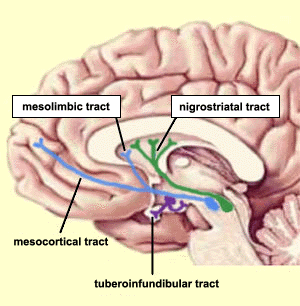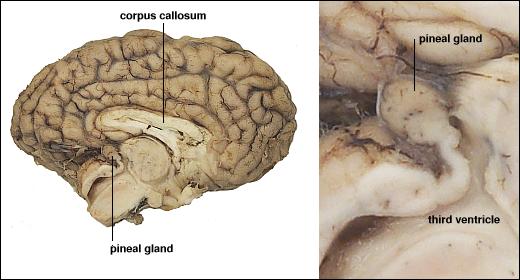- Neurochemistry
- How neurons talk to one another
2017-09-27 16:24:30
Today's Topics


How to stop your prey
| Substance | Effect |
|---|---|
| Japanese pufferfish toxin | Blocks voltage-gated \(Na^+\) channels |
| Black widow spider venom | Accelerates presynaptic ACh release |
| Botulinum toxin | Prevents ACh vesicles from binding presynaptically |
| Sarin nerve gas | Impedes ACh breakdown by AChE |
| Pesticides | Impedes AChE |
| Tetanus toxin | Blocks release of GABA, glycine |
Monoamine Song
Monoamine Song
Monoamines, do-do do do-do Monoamines, do do do-do Monoamines, do do do do-do do do-do do do-do do do do do-do do
Monoamine Song
Monoamines, do-pa-mine is one Monoamines, norepi, too Monoamines, sero-tonin e-pinephrine, dop-a- mine, nor-epinephrine, melatonin, whoo!
Monoamine Song
Monoamines, mod-u-late neurons Monoamines, throughout the brain Monoamines, keep people happy, brains snappy, not sleepy, not sappy, do-do do-do do-do do
Monoamine NTs
| Family | Neurotansmitter |
|---|---|
| Monoamines | Dopamine (DA) |
| Norepinephrine (NE)/Noradrenaline (NAd) | |
| Epinephrine (Epi)/Adrenaline (Ad) | |
| Serotonin (5-HT) | |
| Melatonin | |
| Histamine |
Information processing
- Point-to-point
- One sender, small number of recipients
- Glu, GABA
- Broadcast
- One sender, widespread recipients
- DA, NE, 5-HT, melatonin, histamine
- Often involved in psychiatric conditions (Costa, Brookes, and Hennig 2000)]
Information processing
- Need to know
- NT, where projecting, type of receptor to predict function
Dopamine (DA)
- Released by
- Substantia nigra -> striatum, meso-striatal projection
- Ventral tegmental area (VTA) -> nucleus accumbens, ventral striatum, hippocampus, amygdala, cortex; meso-limbo-cortical projection
- hypothalamus -> pituitary; tuberohypophysial projection
- also olfactory bulb and in retina
- ~80% of brain DA in basal ganglia (Sian et al. 1999)(https://www.ncbi.nlm.nih.gov/books/NBK27905/)
Dopamine Anatomy
DA Disruption linked to
- Parkinson's Disease (mesostriatal)
- DA agonists treat (agonists facilitate/increase transmission)
- ADHD (mesolimbocortical)
- Schizophrenia (mesolimbocortical)
- DA antagonists treat – Dopamine hypothesis of schizophrenia
- Addiction (mesolimbocortical) – reward system
DA Inactivated by
- Dopamine transporter (DAT) and chemical breakdown
http://www.scholarpedia.org/article/Dopamine_anatomy#Dopamine_receptors
Dopamine receptors
| Type | Receptor | Comments |
|---|---|---|
| Metabotropic | \(D_1\)-like (\(D_1\) and \(D_5\)) | more prevalent |
| \(D_2\)-like (\(D_2\), \(D_3\), \(D_4\)) | target of many antipsychotics |
Norepinephrine (NE)
- Released by
- locus coeruleus in pons/medulla
- postganglionic sympathetic neurons onto target tissues
- Role in arousal, mood, eating, sexual behavior
- Monoamine oxidase inhibitors (MAOIs)
- inactivate monoamines in neurons, astrocytes
- MAOIs increase NE, DA
- Treatment for depression
NE Anatomy
NE receptors
| Type | Receptor | Comments |
|---|---|---|
| Metabotropic | \(\alpha\) (1,2) | antagonists treat anxiety, panic |
| \(\beta\) (1,2,3) | 'beta blockers' in cardiac disease |
| Epinephrine | Norepinephrine | |
|---|---|---|
| Chemical diff | + methyl group | |
| Released | Mostly from adrenal medulla | adrenal medulla + symp NS |
| Targets | broader | narrower |
| Therapeutic | treat allergic reactions | increase blood pressure |
Serotonin (5-HT)
- Released by raphe nuclei in brainstem
- Role in mood, sleep, eating, pain, nausea, cognition, memory
- Modulates release of other NTs
- esp. glutamate & DA
- Most of body's 5-HT regulates digestion via enteric nervous system
Enteric nervous system
- ~ 500 M nerves (> spinal cord), aka "second brain"
- Ennervated by symp and parasymp, but can function autonomously
- Interface b/w microbiome and CNS (Lima-Ojeda, Rupprecht, and Baghai 2017)
5-HT anatomy
5-HT receptors
- Seven families (5-HT 1-7) with 14 types
- All but one metabotropic
5-HT clinical significance
- Ecstasy (MDMA) affects serotonin
- So does lysergic acid diethylamide (LSD)
- promotes visual hallucinations via 5-HT upregulation?
- Fluoxetine (Prozac)
- Selective Serotonin Reuptake Inhibitor (SSRI)
- Treats depression, panic, eating disorders, others
- 5-HT3 receptor antagonists are anti-mimetics used in treating nausea
Melatonin
- Released by pineal gland
Histamine
- Released by hypothalamus, projects to whole brain
- Metabotropic receptors
- Role in arousal/sleep regulation
- In body, part of immune response
Targets of psychotropic drugs
Monoamine synthesis network
Others
- Gases
- Nitric Oxide (NO), carbon monoxide (CO)
- Diffuse over larger area than typical NTs
- Nitric Oxide (NO), carbon monoxide (CO)
- Neuropeptides
- Substance P and endorphins (endogenous morphine-like compounds) have role in pain
- Orexin/hypocretin, project from lateral hypothalamus across brain, regulates appetite, arousal
- Cholecystokinin (CCK) stimulates digestion
Others
- Purines
- Adenosine (inhibited by caffeine)
- Others
- Anandamide (activates endogenous cannabinoid receptors)
Types of chemical communication
- Neurocrine
- Sending cell -> Receiving cell
- Autocrine
- Sending cell -> itself
- e.g., presynaptic autoreceptors
- Paracrine
- Sending cell -> neighboring cells
- NO and CO NTs
Types of chemical communication
- Endocrine
- Sending cell -> many cells elsewhere in body
- Pheromone
- Sending cell -> other animals of same species
- Allomone
- Sending cell -> cells in other species
References
Costa, M, S J Brookes, and G W Hennig. 2000. “Anatomy and Physiology of the Enteric Nervous System.” Gut 47 Suppl 4 (December): iv15–9; discussion iv26. doi:10.1136/gut.47.suppl\_4.iv15.
Lima-Ojeda, Juan M, Rainer Rupprecht, and Thomas C Baghai. 2017. “‘I Am I and My Bacterial Circumstances’: Linking Gut Microbiome, Neurodevelopment, and Depression.” Front. Psychiatry 8 (22~aug): 153. doi:10.3389/fpsyt.2017.00153.
Ng, Joanne, Apostolos Papandreou, Simon J Heales, and Manju A Kurian. 2015. “Monoamine Neurotransmitter Disorders–clinical Advances and Future Perspectives.” Nat. Rev. Neurol. 11 (10): 567–84. doi:10.1038/nrneurol.2015.172.
Sian, J, Mbh Youdim, P Riederer, and M Gerlach. 1999. Biochemical Anatomy of the Basal Ganglia and Associated Neural Systems. Lippincott-Raven. https://www.ncbi.nlm.nih.gov/books/NBK27905/.



